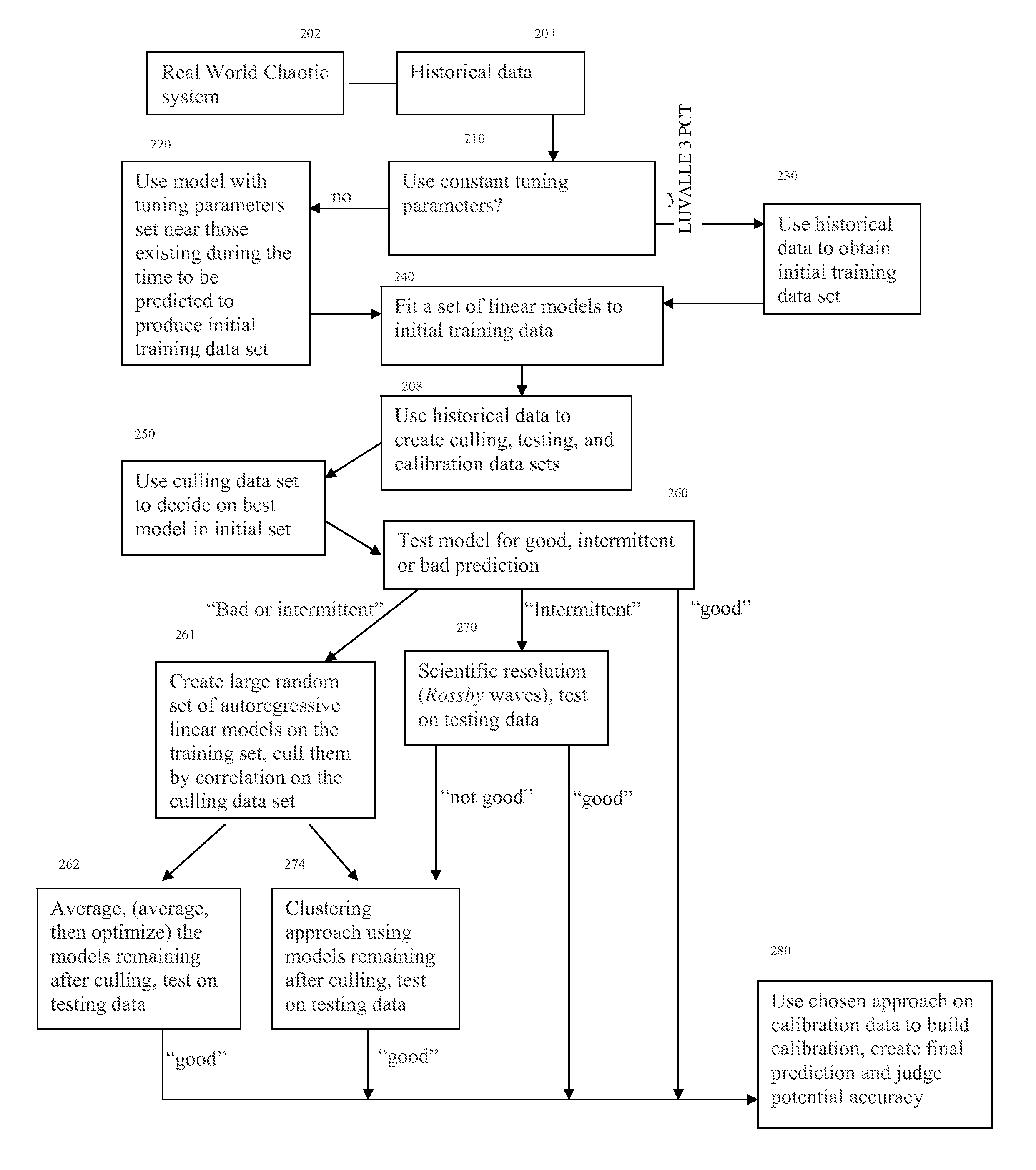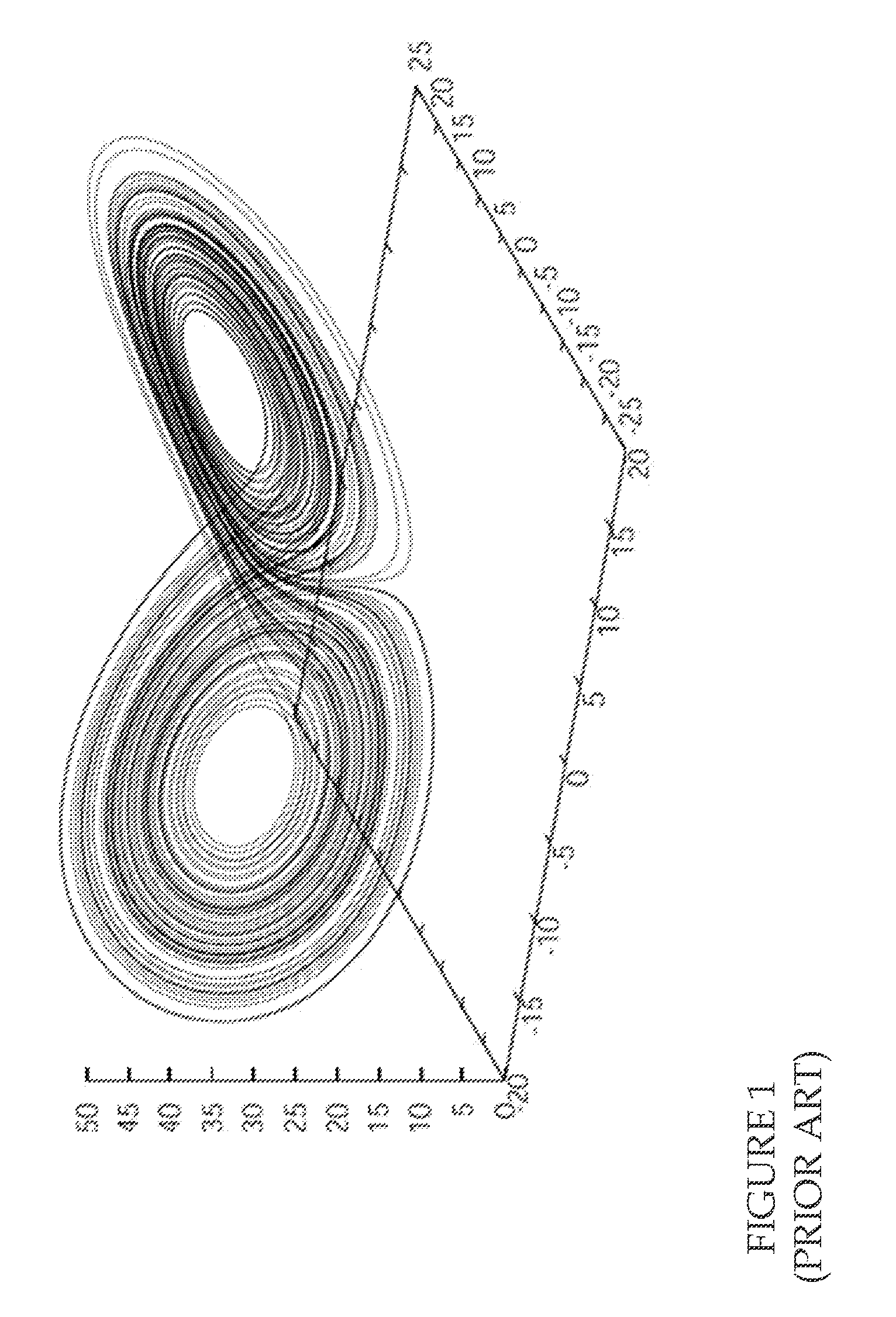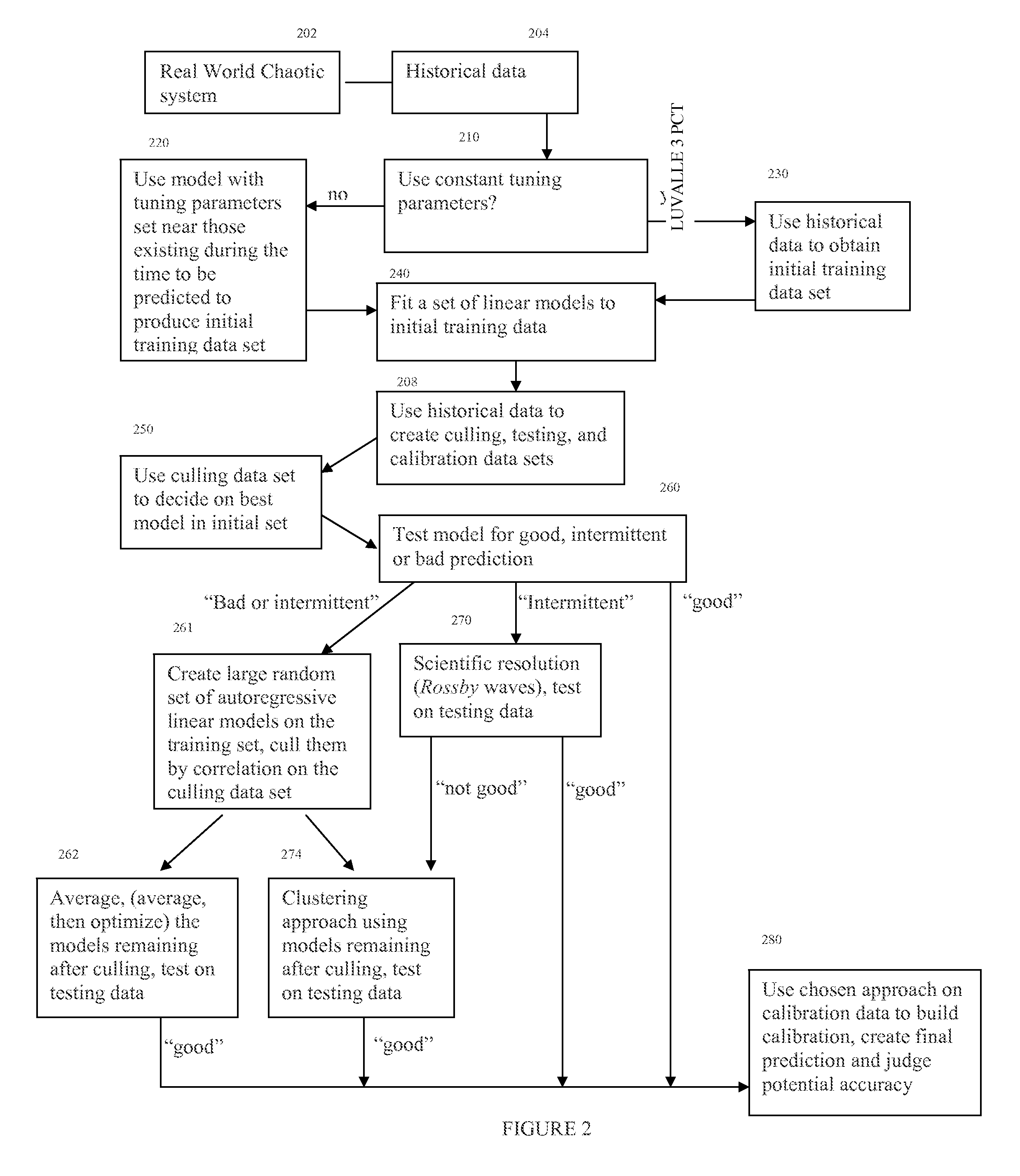Statistical Prediction Functions For Natural Chaotic Systems And Computer Models Thereof
a technology of natural chaotic systems and statistical prediction functions, applied in computing models, probabilistic networks, instruments, etc., can solve problems such as inability to account for (arguably incapable of accounting for) increasing global temperatures, change of thermal conductivity, etc., and achieve accurate prediction
- Summary
- Abstract
- Description
- Claims
- Application Information
AI Technical Summary
Benefits of technology
Problems solved by technology
Method used
Image
Examples
experimental embodiment
[0061]As disclosed herein, the exemplary experiment describes using statistical models derived from a single individual greenhouse gas scenario with steady state close to the GAST in 1994-2010, to predict ground data from 2008-2009 in the continental United States.
[0062]In the exemplary embodiment, it was assumed that the climate system does not have constant tuning parameters due to the accumulation of greenhouse gases in the atmosphere. The experiment consisted of four simulations using a global climate model. Greenhouse gas concentrations were set to four levels, those from 1958, 1985, 1988, and 2007. Each simulation was denoted by the year corresponding to the greenhouse gas concentrations followed by the letters “gg.”
[0063]The GCM simulations were run from 1958 to 2100. The temperature started at the historical 1958 level, and rose naturally to a steady state which varied with greenhouse gas concentration. FIG. 3 depicts a plot of the GAST for each run. In the 1985gg and 1988gg...
PUM
 Login to View More
Login to View More Abstract
Description
Claims
Application Information
 Login to View More
Login to View More - R&D
- Intellectual Property
- Life Sciences
- Materials
- Tech Scout
- Unparalleled Data Quality
- Higher Quality Content
- 60% Fewer Hallucinations
Browse by: Latest US Patents, China's latest patents, Technical Efficacy Thesaurus, Application Domain, Technology Topic, Popular Technical Reports.
© 2025 PatSnap. All rights reserved.Legal|Privacy policy|Modern Slavery Act Transparency Statement|Sitemap|About US| Contact US: help@patsnap.com



